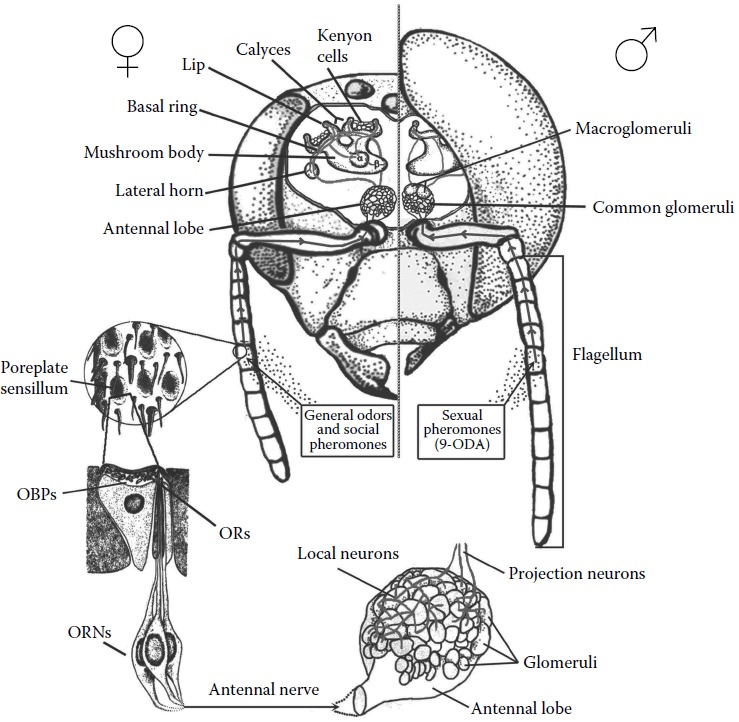From: Chapter 5, Chemical Communication in the Honey Bee Society

NCBI Bookshelf. A service of the National Library of Medicine, National Institutes of Health.

Schematic representation of the reception pathway for general odors and social pheromones in the worker honey bee (left) and for sexual pheromones in the honey bee drone (right) from the antenna poreplate sensilla to the antennal lobe, and the following transmission of the signal in the central nervous system. In the left and lower part of the figure the detail of odor reception from olfactory reception neurons (ORNs) and odorant-binding proteins (OBPs) to the glomeruli of the antennal lobe is highlighted. (Adapted from Winston, M.L. (1987) The Biology of the Honey Bee. Cambridge, MA: Harvard University Press; Morgan, S.M. et al. (1998) Behav Brain Res 91(1–2): 115–26; Frilli, F. et al. (2001) L’ape: Forme e funzioni. Bologna, Italy: Calderini Edagricole.)
From: Chapter 5, Chemical Communication in the Honey Bee Society

NCBI Bookshelf. A service of the National Library of Medicine, National Institutes of Health.